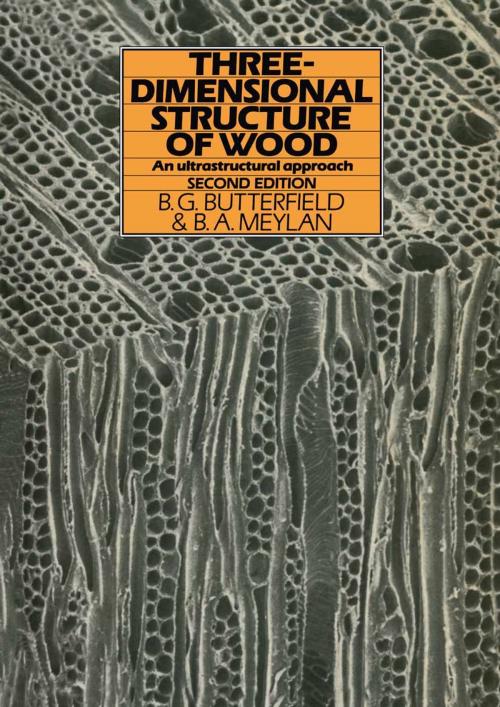Three-dimensional structure of wood
An Ultrastructural Approach
Kids, Natural World, Nonfiction, Reference & Language, Education & Teaching, Science & Nature, Science| Author: | B. Butterfield | ISBN: | 9789401181464 |
| Publisher: | Springer Netherlands | Publication: | December 6, 2012 |
| Imprint: | Springer | Language: | English |
| Author: | B. Butterfield |
| ISBN: | 9789401181464 |
| Publisher: | Springer Netherlands |
| Publication: | December 6, 2012 |
| Imprint: | Springer |
| Language: | English |
Nine years ago saw the publication of the first version of Three-dimensional Structure of Wood: A scanning electron microscope study [95]. This book contained 59 scanning electron micrographs and a modest text outlining the basic structure of wood_ When we wrote it in 1970, the scanning electron microscope was still something of a novelty (the first commercially produced SEM only coming on the market in 1965) and its use as an instrument in serious wood research was still treated by many with a good deal of suspicion. Such suspicions were not without foundation for indeed the first Three-dimensional Structure of Wood was put together from a somewhat paltry collection of a few hundred scanning electron micrographs of wood taken over a two year period. The last decade has seen some remarkable developments in the general understanding of the structure of wood. Our personal collection of scanning electron micrographs has grown from a few hundred to some 16 000. Techniques for specimen preparation [46, 47], particularly in the areas of dehydration [36] and coating have greatly improved. Most significant however, has been the new depth of understanding of wood ultrastructure that has become almost universal. By combining the use of the light, transmission and scanning electron microscopes, scientists in many widely separated parts of the world have now added a vast amount of information to our understanding of such aspects of wood structure as perforation plate development, tylose formation, the formation of reaction wood, septate fibres ultrastructure, etc.
Nine years ago saw the publication of the first version of Three-dimensional Structure of Wood: A scanning electron microscope study [95]. This book contained 59 scanning electron micrographs and a modest text outlining the basic structure of wood_ When we wrote it in 1970, the scanning electron microscope was still something of a novelty (the first commercially produced SEM only coming on the market in 1965) and its use as an instrument in serious wood research was still treated by many with a good deal of suspicion. Such suspicions were not without foundation for indeed the first Three-dimensional Structure of Wood was put together from a somewhat paltry collection of a few hundred scanning electron micrographs of wood taken over a two year period. The last decade has seen some remarkable developments in the general understanding of the structure of wood. Our personal collection of scanning electron micrographs has grown from a few hundred to some 16 000. Techniques for specimen preparation [46, 47], particularly in the areas of dehydration [36] and coating have greatly improved. Most significant however, has been the new depth of understanding of wood ultrastructure that has become almost universal. By combining the use of the light, transmission and scanning electron microscopes, scientists in many widely separated parts of the world have now added a vast amount of information to our understanding of such aspects of wood structure as perforation plate development, tylose formation, the formation of reaction wood, septate fibres ultrastructure, etc.















